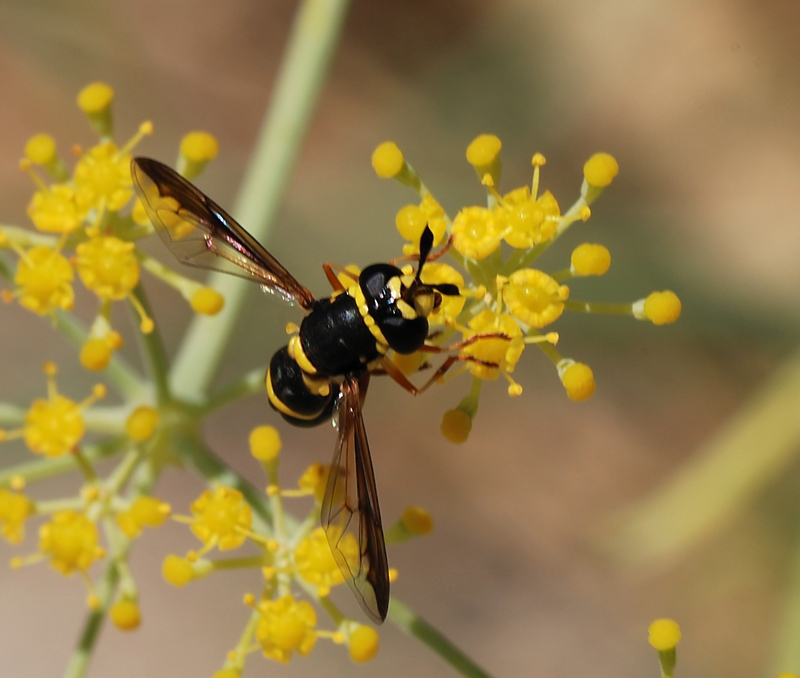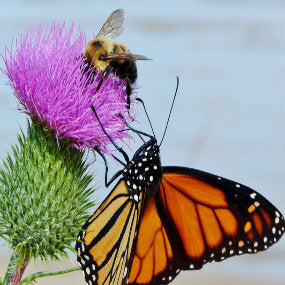Learn How a Bee Hotel will Improve your Garden

Source: National Geographic
You might not realise but some of the most important things in your garden are the insects, especially the Butterflies and bees. They are your secret army of workers, busy pollinating your flowers. They put in the hard graft of transferring the pollen and seeds from one flower to another and fertilising them so they can grow and produce food.
Why protect bees & butterflies?
Bees and butterflies are the most important pollinators of crops and plants. We rely on these pollinators to pollinate apples, plums, carrots, coffee, cotton and much more. Many bee species are in decline mostly due to the loss of feeding and nesting habitats.
These pollinators have been going through a bit of a tough time in recent years. Global warming, increased pesticide use and habitat loss, they are now under threat like never before. That’s pretty scary, so here are a few ways how you can help save them in your own home.

You can also plant some things in your garden which are bee and butterfly friendly, you can provide them with everything they need to get the job done.
- Have a wide variety of different flowers in your garden
- Don’t keep your garden too tidy
- Leave wild flowering plants in place
- Avoid using pesticides.
- If you’re feeling really keen, you could even take a course in bee-keeping to boost bee numbers,
- Or create a butterfly habitat in your garden by planting milkweed.
For a garden buzzing with bees and butterflies, here is a selection of plants which can give them a bit of a helping hand:
Herbs
Lavender, Catmint, Sage, Thyme and Fennel

Perennials
Crocus, Buttercup, Aster, Hollyhocks, Anemones, Snowdrops and geraniums.

Source: Paper4pc
Annuals
Poppy, Sunflower, Calendula, Sweet Alyssum and Heliotrope.

Make a Bee Hotel!
How to make a Bee Hotel?
It is easy!
Option 1: Grab piece of timber and drill a few holes along the surface providing a suitable tube length for the bees to nest in.

Source: lumberjocks.com/projects/31342
Option 2: Tie a few bamboo sticks together and hang them on a wall!

Source: dk.com
Option 3: You can also make a bee hotel out of an old hose and biscuit tin, recycling and rehoming all in one.

What type of bees will your bee hotel attract?
Good news, the species of bees that use a bee hotel are not dangerous or produce painful stings. It is completely safe for you and your family to have one in your backyard.
Red Mason Bees
Red Mason Bees build nests sealed with mud in spring and early summer. The males are smaller and have a tuft of white hair on the face. Red Mason Bees can be found in Europe.
Source: naturespot.org.uk
Blue Mason Bees
Blue Mason Bees build nests with sealed chew leaf which is green when fresh and fades to black. Males are shiny metallic green with orange coloured hairs and the females are dark metallic blue. The Blue Mason Bee can be found in Japan, North America and South America.

Source: threehundredandsicty.com
Leaf-cutter Bees
Leaf-cutter bees use cells out of leaves to create their nest! The Leaf-cutter bee can be found in Australia, North American, and Europe.

Source: theconversions.com
White-faced Bees
White-faced bees are hairless black bees which are normally quite tiny. They build their nest out of natural polyester. They create the polyester from their abdomen and mouth. The White-Faced bees are found in North America and Canada.

Source: bugguide.et
Solitary Wasps
There are several beneficial solitary wasps who will use bee hotels. They use a variety of nest materials and will provision the nests with a variety of pest species like greenfly and caterpillars. Solitary Wasps are found in Australia, North America and Europe.

Source: commons.wikimedia.org
Australian Native Bees
Stingless bees are tropical and can be found in warm areas of Australia such as the north eastern areas of New South Wales, Queensland, northern areas of West Australia and Northern Territory. Australian stingless bees are great pollinators for crops and small amounts of honey production.
The most popular stingless bees found in Australia are Austroplebeia cincta, Tetragonula carbonaria, Tetragonula hockingsi.
Austroplebeia cincta
Austroplebeia cincta are tiny bees only 3.4mm long. They have striking bright yellow markings on their thorax and face. They are commonly described as the ‘Pretty Ones’ amongst bee lovers.

Source: Aussiebee.com.au
Tetragonula carbonaria
Tetragonula carbonaria are great pollinators. What is interesting about them is that they pack the pollen into round balls on their hind legs and carry it back to their nest. The Tetragonula carbonaria have white fur on their faces and sides which makes them easier to identify.

Source: nativebeehibves.com.au
Tetragonula hockingsi
Tetragonula hockingsi are known as the hard-working bee. They are mostly found in the coastal areas of Queensland and the Northern Territory. They thrive in hot climates and have a great ability to defend their nest. They have a jet black coloured body and are slightly larger than their cousins bees T. carbonaria.

Source: padil.gov.au


.JPG)







